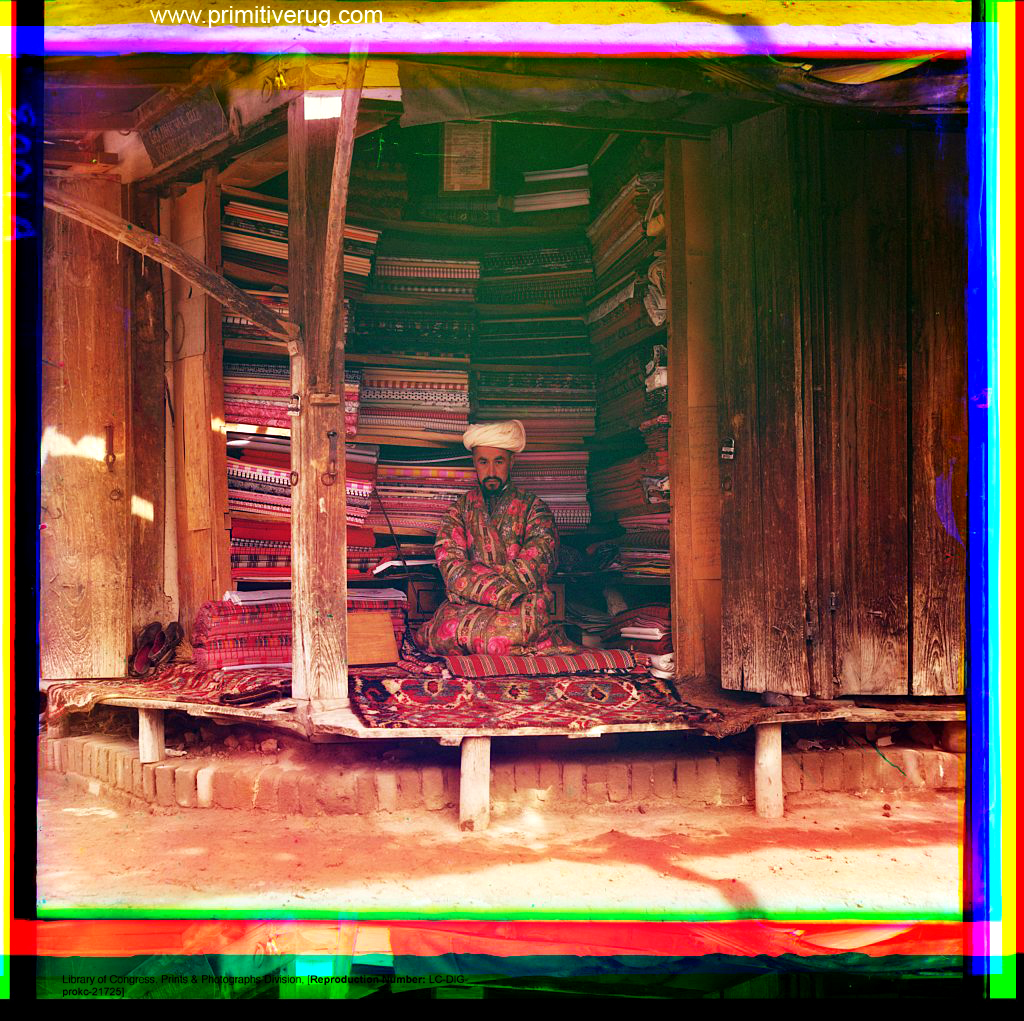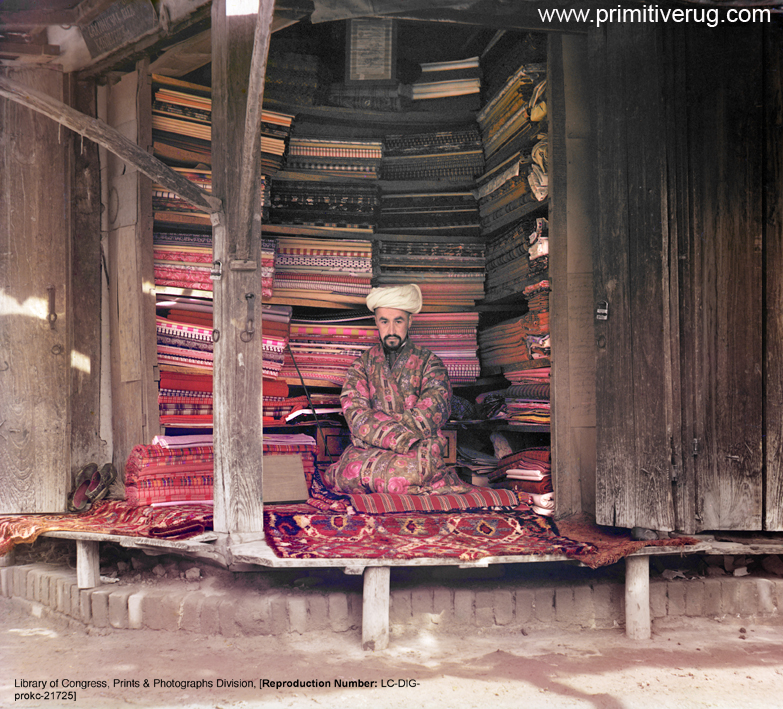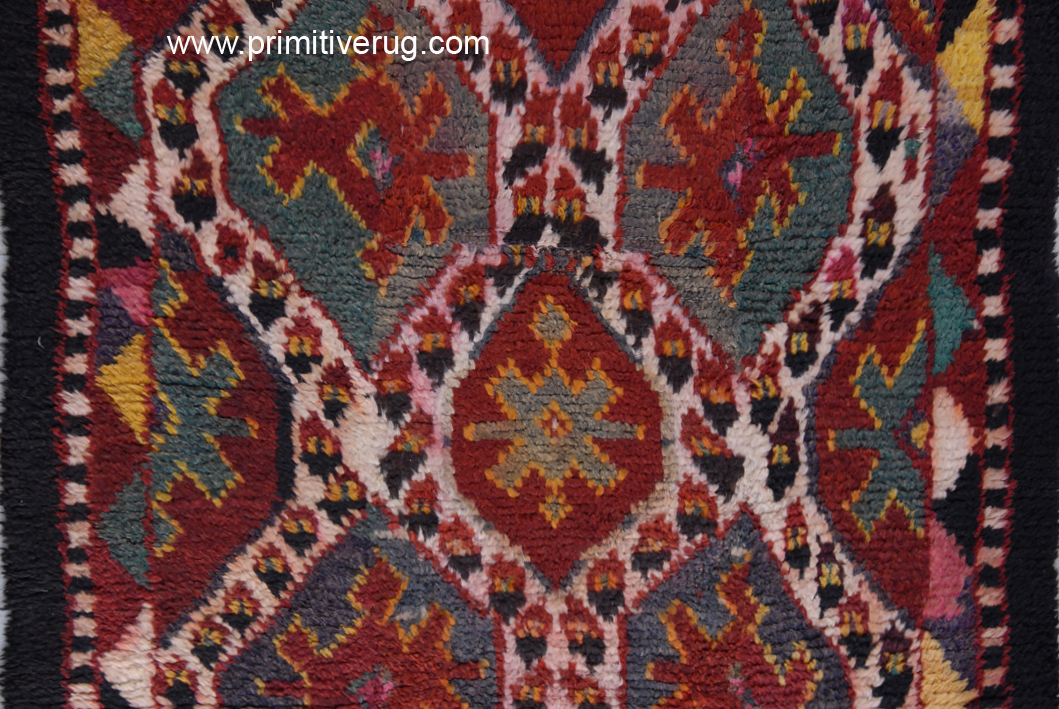The Fabric Merchant of Samarkand
Robert Cobcroft
The Fabric Merchant of Samarkand's Julkhirs 1
Two Julkhirs in use on the floor of a fabric merchant’s store in Samarkand Circa 1910 silk, cotton and wool fabrics as well as a framed page of the Koran are hung on the wall.
Prokudin-Gorskii employed a unique colour photographic process to capture the image of the Samarkand cloth merchant. Three glass negatives exposed simultaneously, described as triple-frame images made with colour seperation filters. The effect can be seen at the edge of the image. In post production the negatives were sandwiched together to create a colour composite. We are fortunate to have access to these early colour images.
The two Julkhirs shown in this image are typical of early 20th Century production where Julkhirs were produced using synthetic dyes. In some the dyes are extremely unstable and bright garish colours were used, presumably a shortcut to emulate the deeply saturated naturally dyed 19th century examples. Compare the image to the right to the one at the front of the fabric merchants store – this rug has all of the problems associated with the use of these dyes.
See also Moshkova for other example illustrated dating from the beginning of the twentieth century.2
1 Image: Library of Congress, Prints & Photographs Division, [Reproduction Number: LC-DIG-prokc-21725]
2. Moshkova V. G. Carpets of the People of Central Asia (George O’Bannon, Arizona Lithographers Tucson, Arizona, 1996 pp,. 78,86



